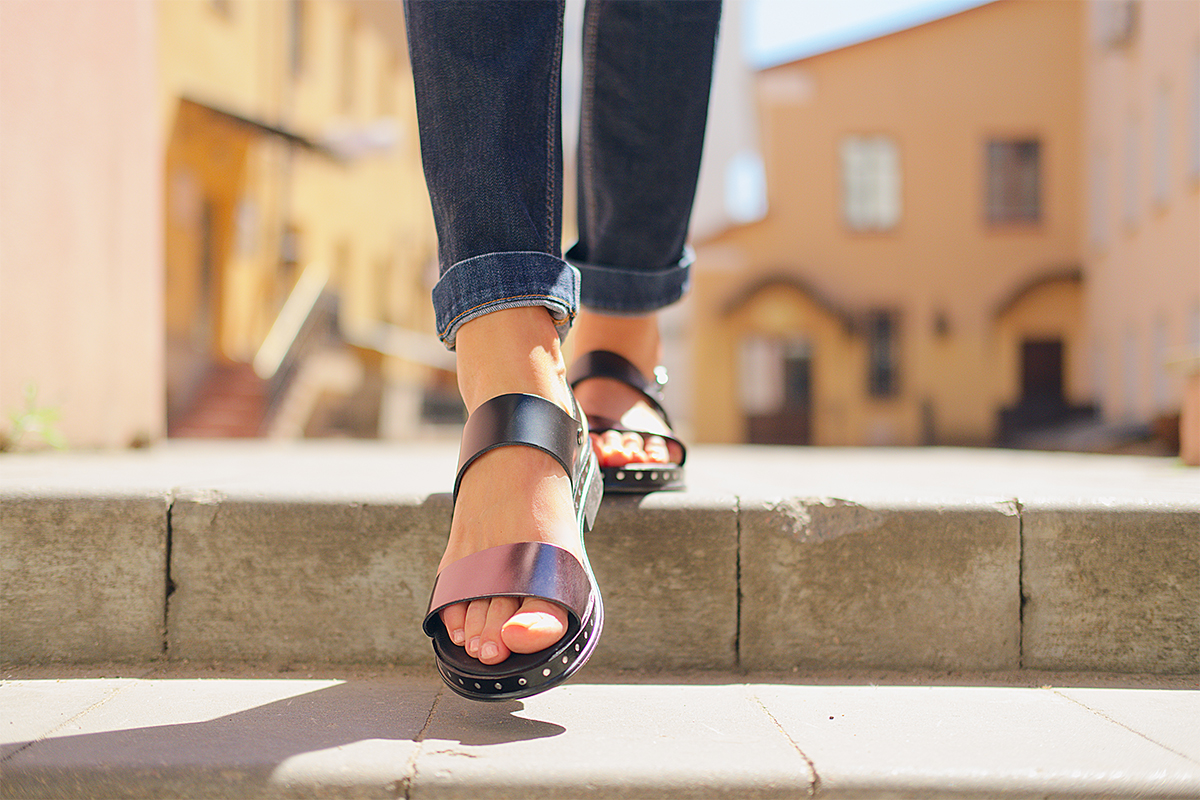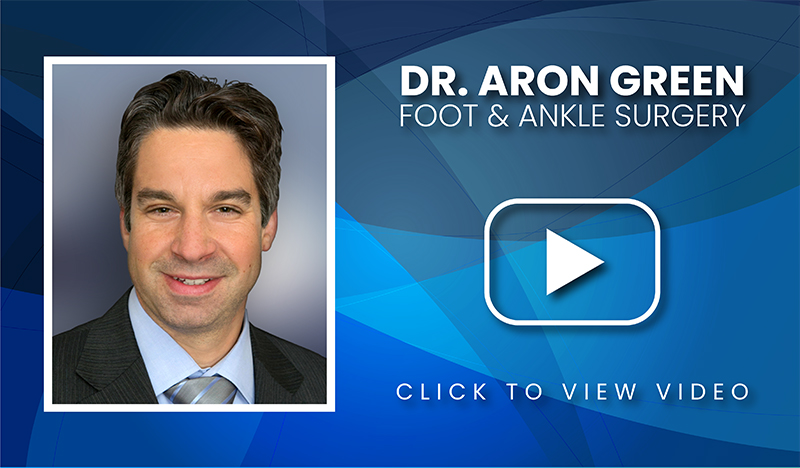Bunion Treatment: Get Your Feet Beautiful for Sandal Season!

Don’t let unsightly bunions keep you from wearing your favorite footwear. Sandal season is soon upon us as warm weather is approaching, and you don’t want to be left out of the fun in the sun because of foot pain and discomfort.
Now is the time to take care of those pesky, painful bunions. At Seaview Orthopaedics, we can help. Dr. Aron Green specializes in minimally invasive bunion surgery (also known as keyhole bunion surgery). Minimally invasive bunion surgery will have you up and about in no time enjoying the warm weather and donning your favorite sandals.
What Are Bunions?
Bunions are one of the most common conditions that can affect the feet. They are deformities that occur at the joint at the base of the big toe. The first long bone in the foot, called the first metatarsal, shifts outward at the metatarsophalangeal (MTP) joint, creating a protruding bump on the side of the foot and causing the big toe to shift toward the second toe.
What Causes Bunions?
There are several factors that can contribute to the formation of bunions, including genetics and choice of footwear.
Bunions are thought to have a genetic component, including the laxity of the joints or poorly formed or abnormal collagen. In some cases, bunions develop in children due to a genetic predisposition to this foot deformity.
Improper footwear can also contribute to bunion formation or cause the deformity to worsen. Shoes that are too tight, ill-fitting, or narrow can increase the likelihood of bunion development. High heels may also be a contributing factor, as they force the toes to crowd into the front of the shoe. To decrease your chances of developing bunions, it is recommended that you avoid this type of footwear. Recommended footwear has a heel height of fewer than 1.5 inches.
Who is at a Higher Risk of Developing a Bunion?
Bunions are more common in women than in men. Footwear is thought to be a contributing factor, as a study by the American Foot and Ankle Society found that 88% of women have worn shoes that did not fit properly.
When is the Right Time to Get Treatment for Bunions?
Bunions can be fixed and the right time to fix them is when the bunion starts to hurt. Without proper treatment, bunions often worsen over time. As bunions get larger, they become more painful and may lead to additional problems. Bunions cause the MTP joint to become enlarged, which may lead to bursitis, an inflammation of the fluid-filled sac that cushions the joint. It can also lead to misalignment of the second toe, as the big toe angles further inward, causing a painful hammertoe.
What Treatment Options are Available for Bunions?
At Seaview Orthopaedics, we offer both nonsurgical and surgical treatment options for bunions to relieve pain and discomfort. Because bunions vary in shape and size there are over 100 different surgical techniques that can be used to correct a bunion deformity. Bunion deformities are categorized as mild, moderate, or severe. Based on the severity of the bunion, your orthopedic surgeon will choose the surgical technique that is best suited to correct the deformity.
Nonsurgical treatment can be helpful for reducing pain and preventing further progression of the deformity, but it will not correct the deformity.
Schedule Your Appointment Today
Minimally Invasive Bunion Surgery
Minimally invasive bunion surgery or keyhole bunion surgery is the recommended treatment for large bunion deformities. Keyhole bunion surgery allows for faster recovery, easier rehabilitation, and almost immediate weight-bearing.
At Seaview Orthopaedics, Dr. Green is a leader in the foot and ankle field. He has developed a proximal procedure (which is currently in the FDA approval process) to treat such large bunion deformities.
What is Keyhole Bunion Surgery?
During keyhole bunion surgery, your orthopedic surgeon makes very small keyhole cuts to access the bone around the bunion and cut them and shift them. Then specially crafted screws are passed through the very small cuts to hold the cut bones. Prominent bumps are shaved off, making the bump of the bunion much smaller and less prominent.
What is the Recovery Time for Keyhole Bunion Surgery?
After surgery, you will have a soft bandage applied that needs to stay on for 2 weeks. It will be removed 2 weeks post-surgery at your follow-up appointment, and at that time you can start wearing supportive athletic shoes.
Immediately after surgery, you can walk with crutches for balance and support.
Since keyhole bunion surgery is a minimally invasive procedure, patients can expect to return to their normal activities within 2 to 4 weeks. During recovery, patients are encouraged to limit any strenuous activity for at least 4 weeks after surgery.
Physical therapy, which is offered at all six Seaview office locations, may be recommended after surgery to restore strength and range of motion in the foot.
Possible complications of bunion surgery include stiffness and positional abnormalities in the big toe. There is also a chance that the bunion can recur after surgery. The chance of recurrence can be as low as 5% and as high as 50%. It is recommended that patients avoid tight, narrow shoes and high heels after bunion surgery to reduce the chance of recurrence.
How Does Open Bunion Surgery Differ from Keyhole Bunion Surgery?
With keyhole bunion surgery the incisions are much smaller than in open bunion surgery. In open bunion surgery, the larger incisions cut through all layers of tissue around the bone all the way down to bone along the length of the cut. As a result, the scar is much bigger, the pain is more significant, and the recovery time is longer. The recovery period for open bunion surgery, ranges from 6-8 weeks and patients are usually fitted with a cast or large walking boot. Because open bunion surgery is more invasive, patients cannot put weight on the operated foot for at least 2 weeks after surgery.
With keyhole bunion surgery, there are several benefits as compared to open bunion surgery. These include:
- Smaller incisions resulting in decreased risk of infection and faster healing.
- Decreased postoperative stiffness in the foot so you start moving faster.
- Earlier weight-bearing on the foot due to lower-grade stiffness.
- Less damage to tissues and minimal external scarring.
Keyhole Bunion Surgery in Jersey Shore and Central New Jersey
Our board-certified foot and ankle surgeon at Seaview Orthopaedics, Dr. Aron Green, specializes in keyhole bunion surgery. He has over 10 years of experience performing this procedure. If you would like to Book Appointment with Dr. Green, at one of our six NJ office locations, please call (732) 660-6200 or schedule an appointment online today. We look forward to helping you get your feet beautiful for sandal season!


